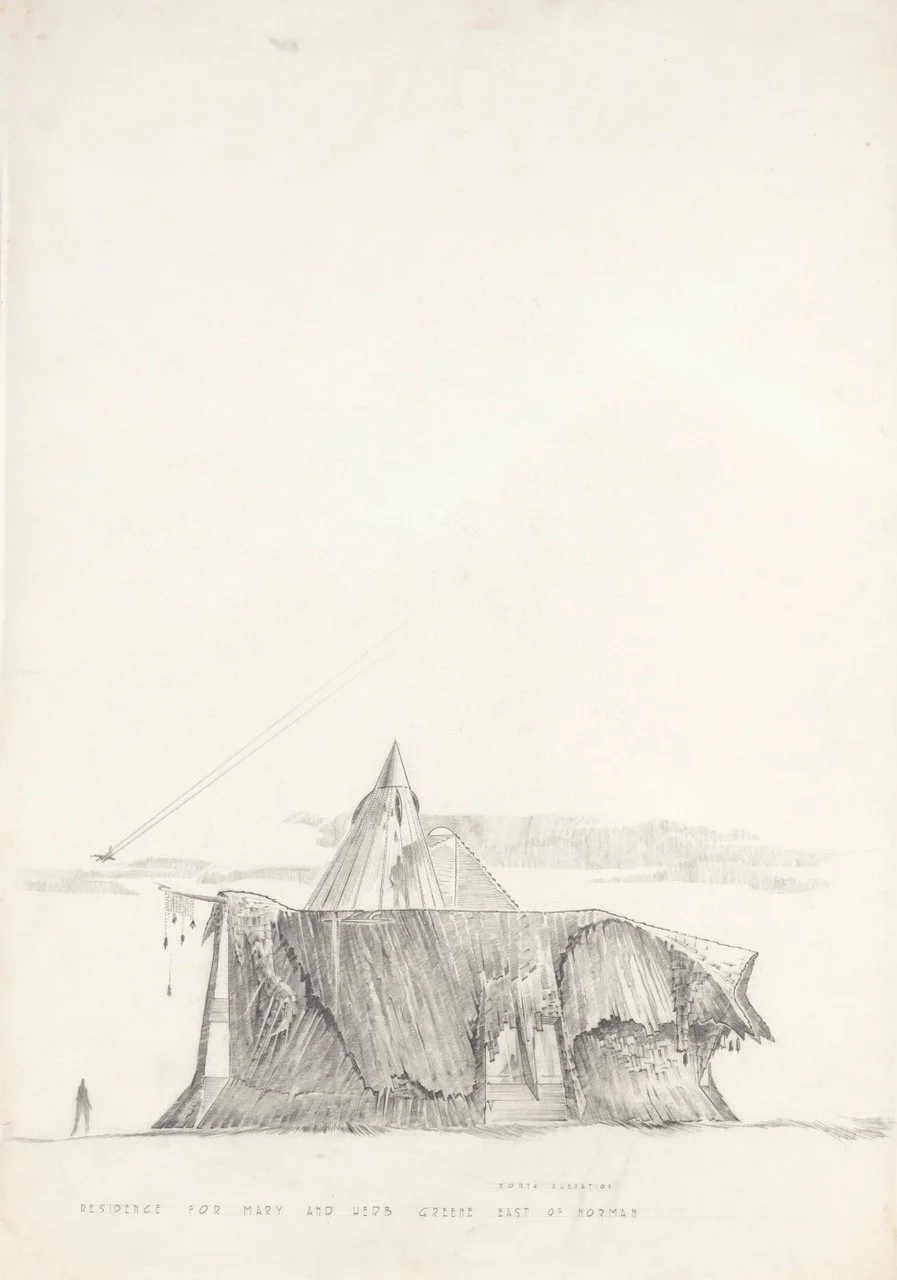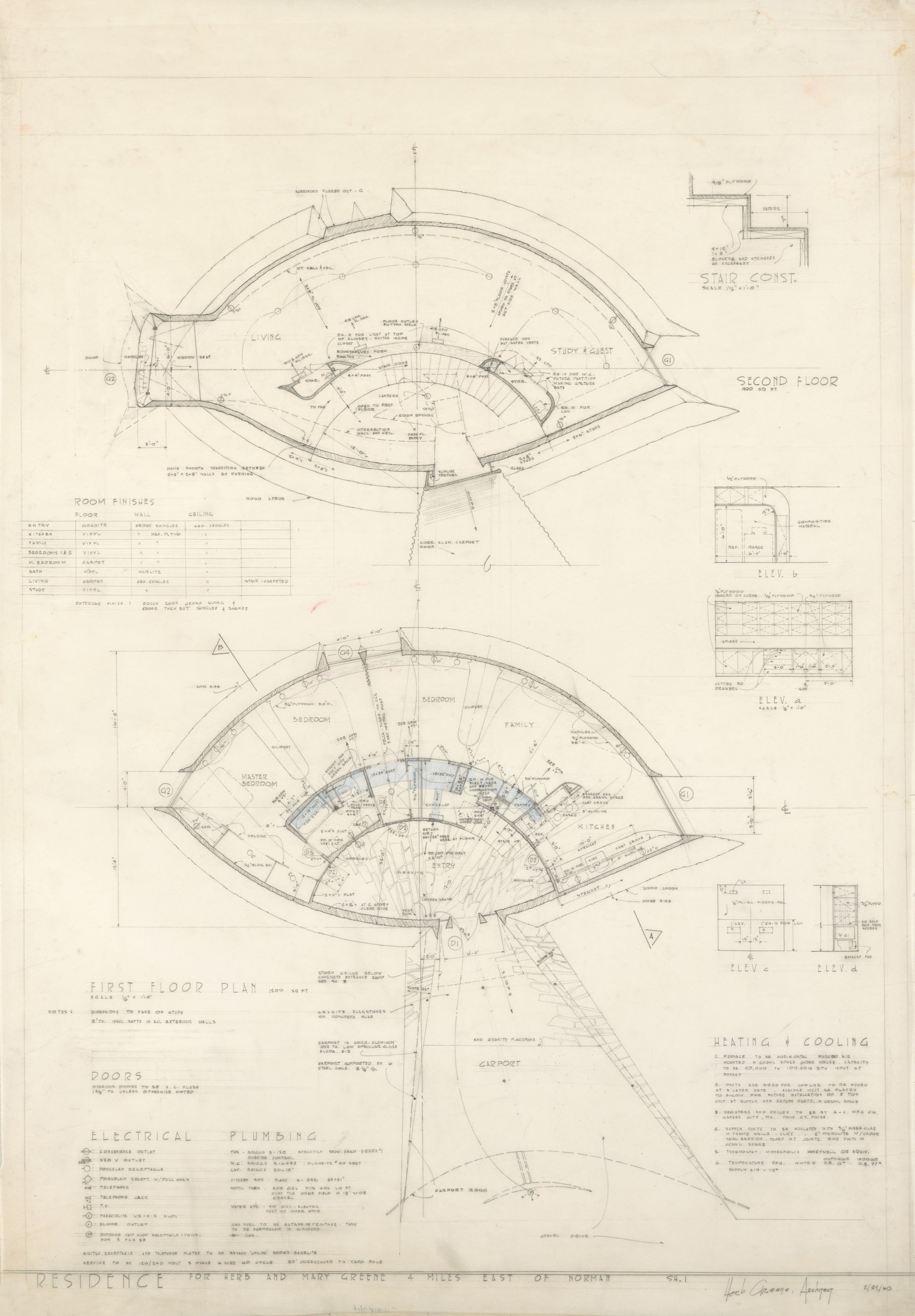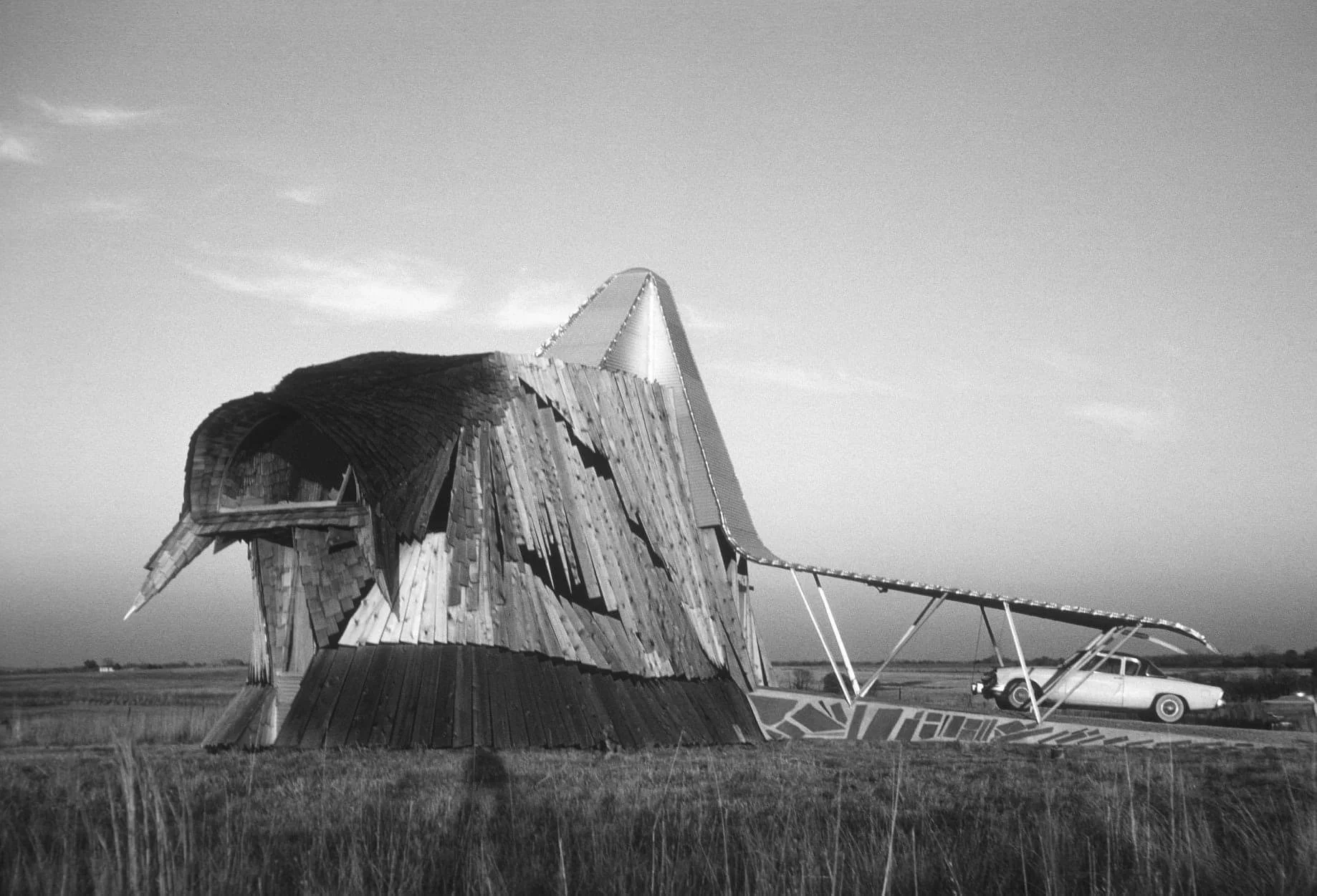History
Herb Greene’s influential though under-recognized design practice, stems from Bruce Goff’s non-conformist pedagogy and an overlooked counterculture architecture movement in the 1950-60s, now referred to by the University of Oklahoma as the American School. Attracted by Goff's ethos of encouraging individual process rather than replicating an accepted style, Greene transferred from Syracuse University to study with Goff from 1948-1953. During this period Greene was recognized for his imaginative rendering skills and Goff entrusted him with presentation drawings for some of his most well known projects, including the iconic Bavinger House, among many other designs.
Greene joined the faculty at University of Oklahoma in 1958, where he hoped "to contribute to the imaginative side of the department of architecture" and to pursue his love of painting and montage. Greene's first significant project after returning to Oklahoma was his own Prairie House (1960-1961), in Norman, Oklahoma. Greene’s residence drew popular acclaim after Julius Shulman published photographs of the home in the 1961 issue of Life magazine (alongside the Joyce Residence in Snyder, OK). The Prairie House is considered by some to be one of the most coherent embodiments of the type of Organic architecture exemplified by Bruce Goff and his followers. At the current age of 92, he is the only living member of the University of Oklahoma American School faculty and the Prairie House is one of only three buildings still standing in Norman from this significant era in Oklahoma history.

Elevation Drawing © Herb Greene

Photo: Julius Shulman. © J. Paul Getty Trust. Getty Research Institute

Working Drawings © Herb Greene

Photo © Robert Alan Bowlby
